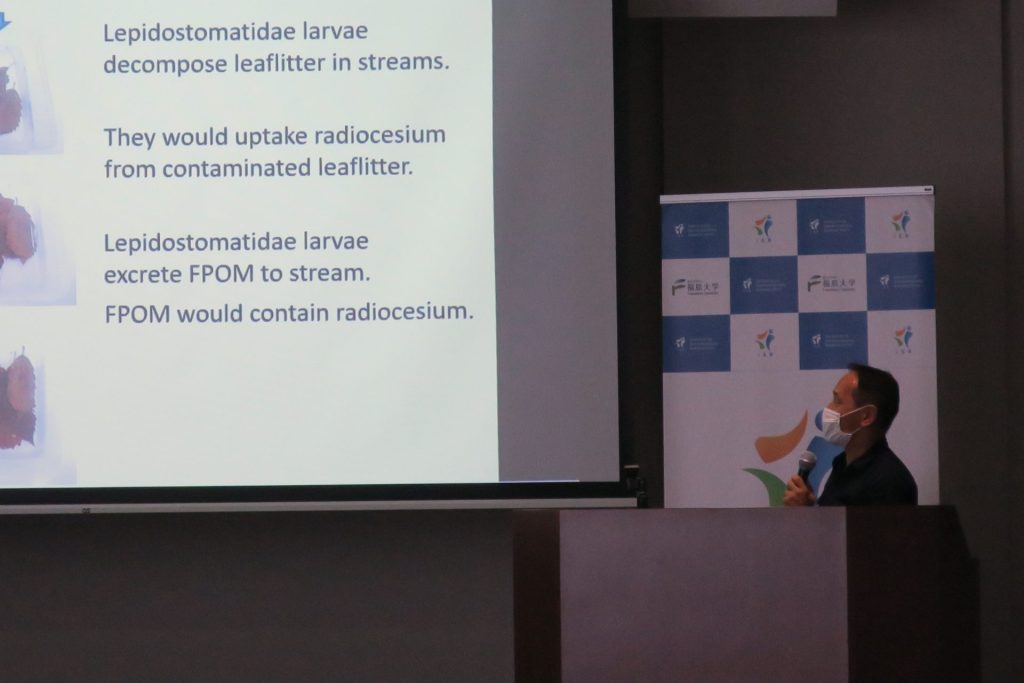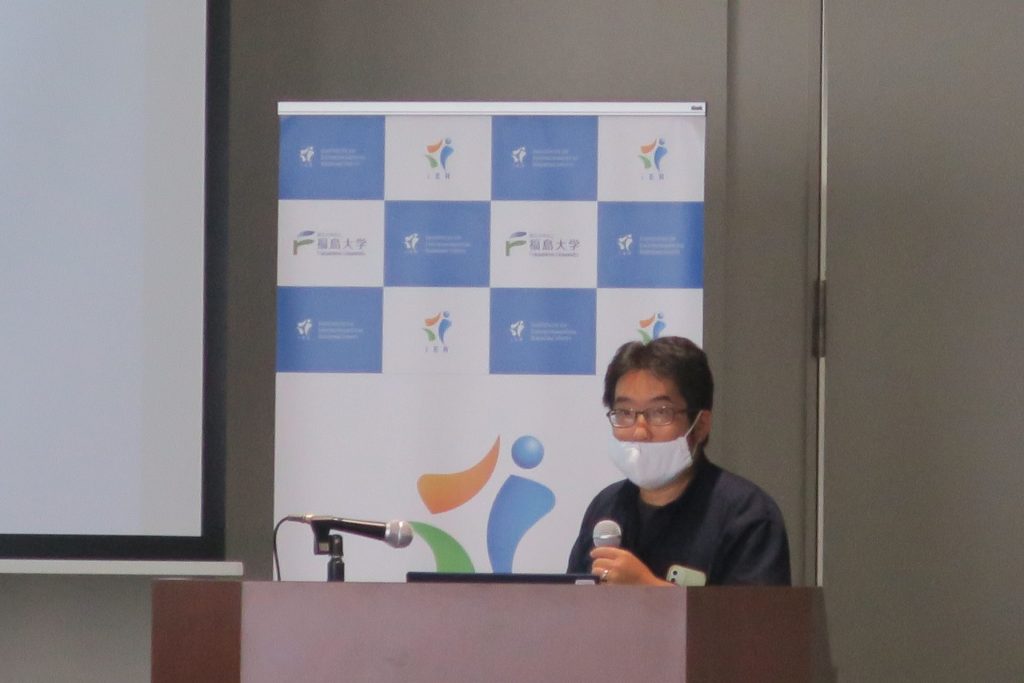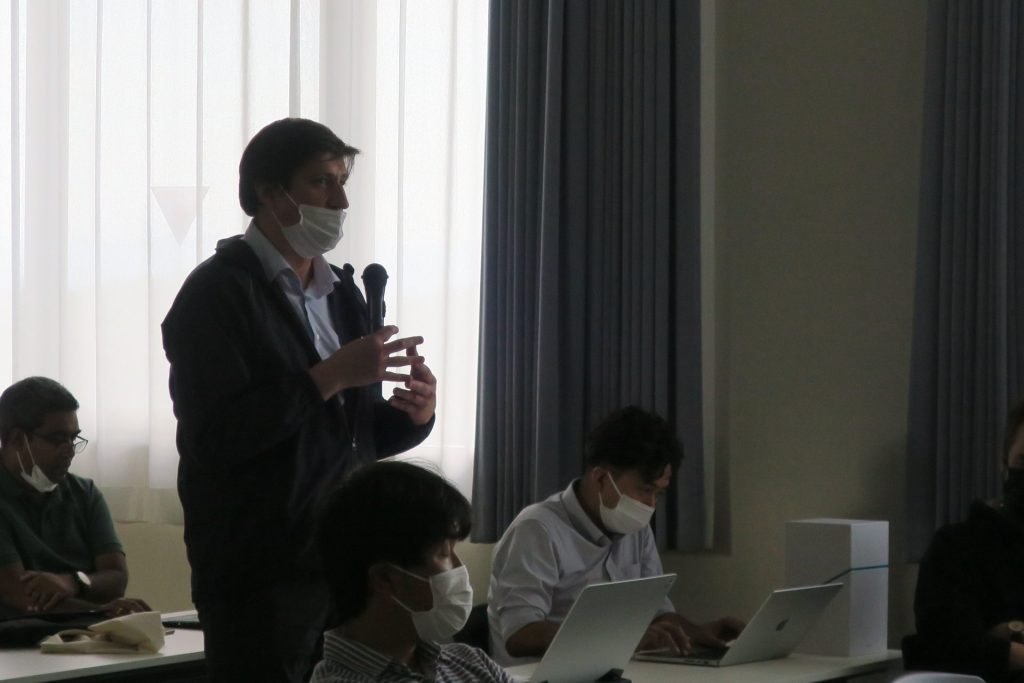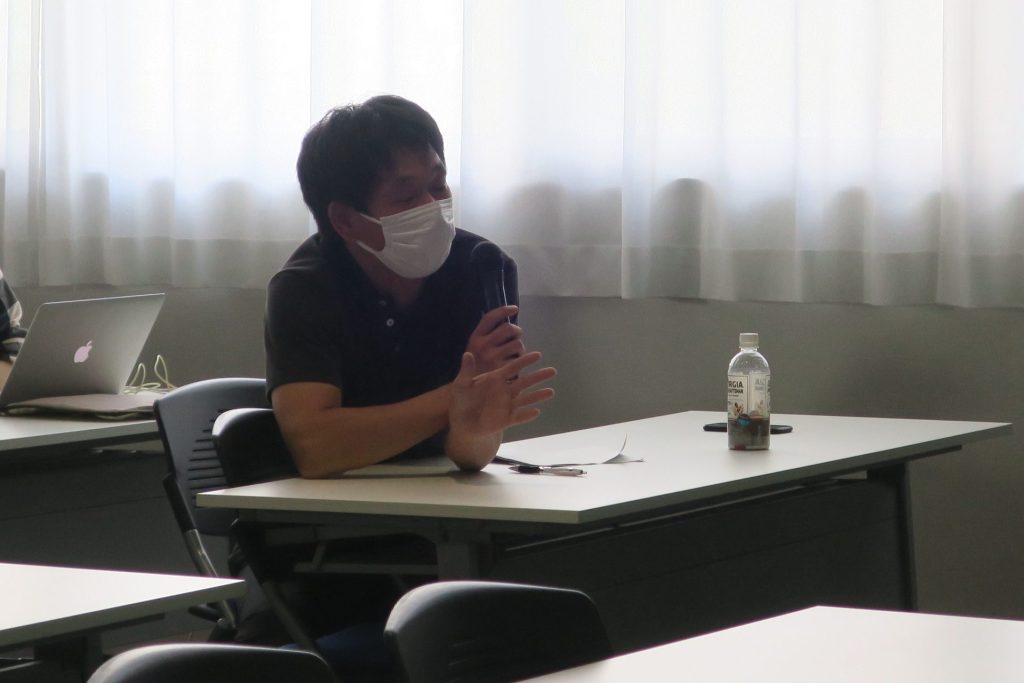September 26, 2022 We held the 4rd IER Seminar in-person and online Zoom participants. <Project Researcher, KANASASHI, Associate Professor, WADA>
Date & Time
Mon. September 26, 2022, 2:00 p.m. – 3:00 p.m.
Speaker
Project Researcher, KANASASHI Tsutomu
Associate Professor, WADA Toshihiro
(Presentation order)
Presentation Title
Lepidostomatidae larvae uptake 137Cs from leaves and excrete particulate materials with 137Cs in streams (KANASASHI)
Remaining issues for Fukushima’s fisheries recovery and application of biology tags to track the horizontal / vertical movements of flatfish (WADA)
Institute of Environmental Radioactivity (IER) regularly holds the IER seminar in which the faculty members report on their research results, with the aim of facilitating their research activities and promoting communication.
The fourth IER Seminar in this fiscal year was held on September 26 with two presentations by Project researcher KANASASHI Tsutomu and Associate Professor WADA Toshihiro. The seminar was attended by 20 researchers and graduate students, including online attendees.


Project Researcher KANASASHI presented about variations of radiocesium concentration in processes eating leaflitter and excreting particulate materials by larvae of Lepidostomatidae in headwater streams. To clarify this variation will be important to understand radiocesium transferring from riparian forests to headwater streams. Laboratory experiment showed that the larvae had lower 137Cs concentration than the leaflitter and particulate materials, and the particulate materials had higher 137Cs concentration than the leaflitter. These results speculated that the larvae absorbed and accumulated more essential nutrient substances than 137Cs from the leaflitter. This experiment will be continued to accumulate data, and elements’ concentration in the leaflitter, larvae, and particulate materials will be measured and analyzed.
Associate Professor WADA made a presentation on remaining issues for Fukushima’s fisheries recovery and application of depth-temperature archival tags to track the horizontal/vertical movements of flatfish. Major problems such as tsunami damage to fisheries-related facilities and radiocesium contamination of marine products after the FDNPP accident have almost been settled . However, it is extremely important for the full recovery of fisheries in Fukushima to assess the potential risk of migration of contaminated fish in the FDNPP port. He has then developed a method to track the horizontal/vertical movements of spotted halibut by using the archival tags. By analyzing data of recaptured fish attached with the tag, he was able to track the horizontal and vertical movement of fish, and also to obtain evidence that fish can migrate into and out from the FDNPP port. In the future, the developed method will be applied to other fish like tiger puffer.
After the presentation, various questions and opinions were exchanged among participants.


